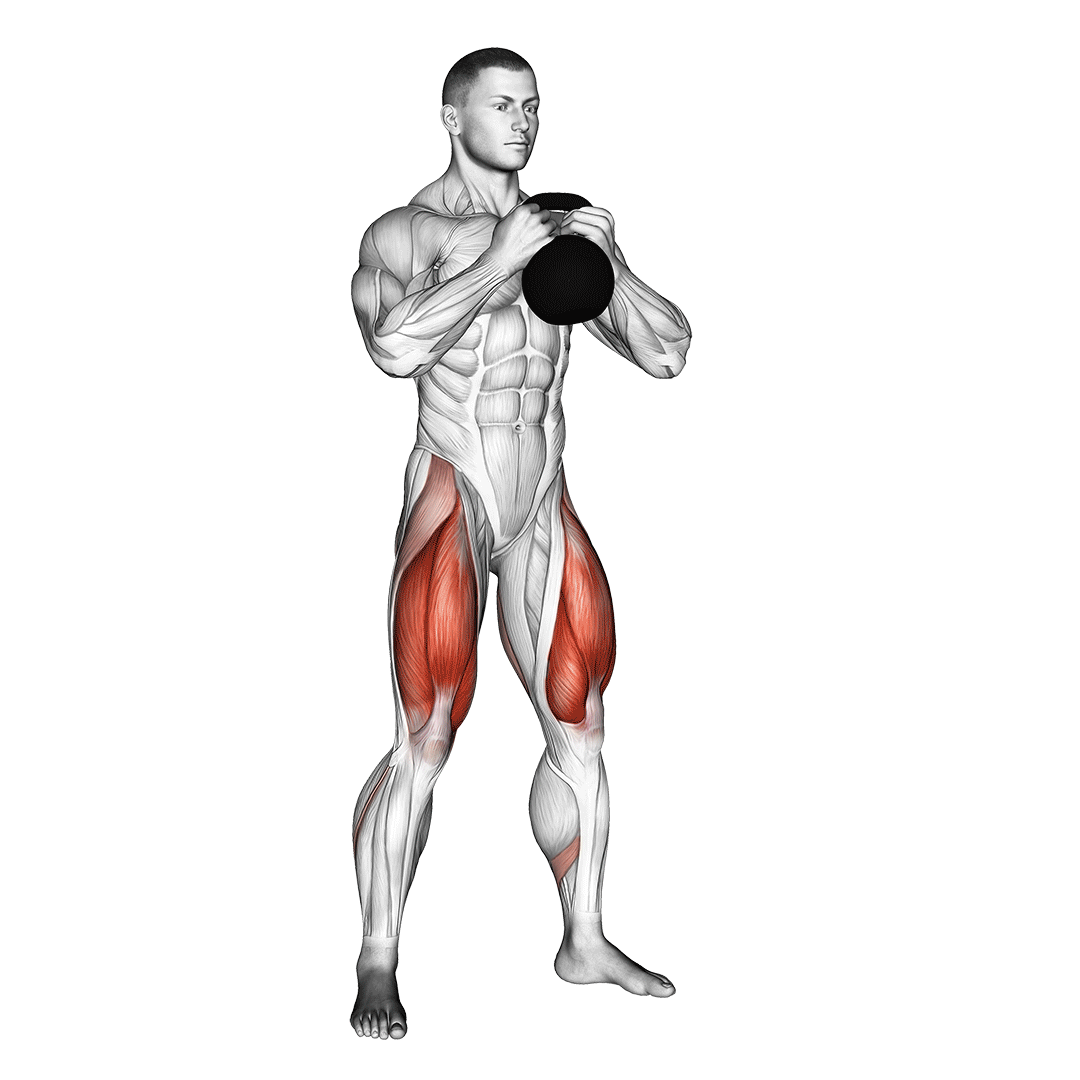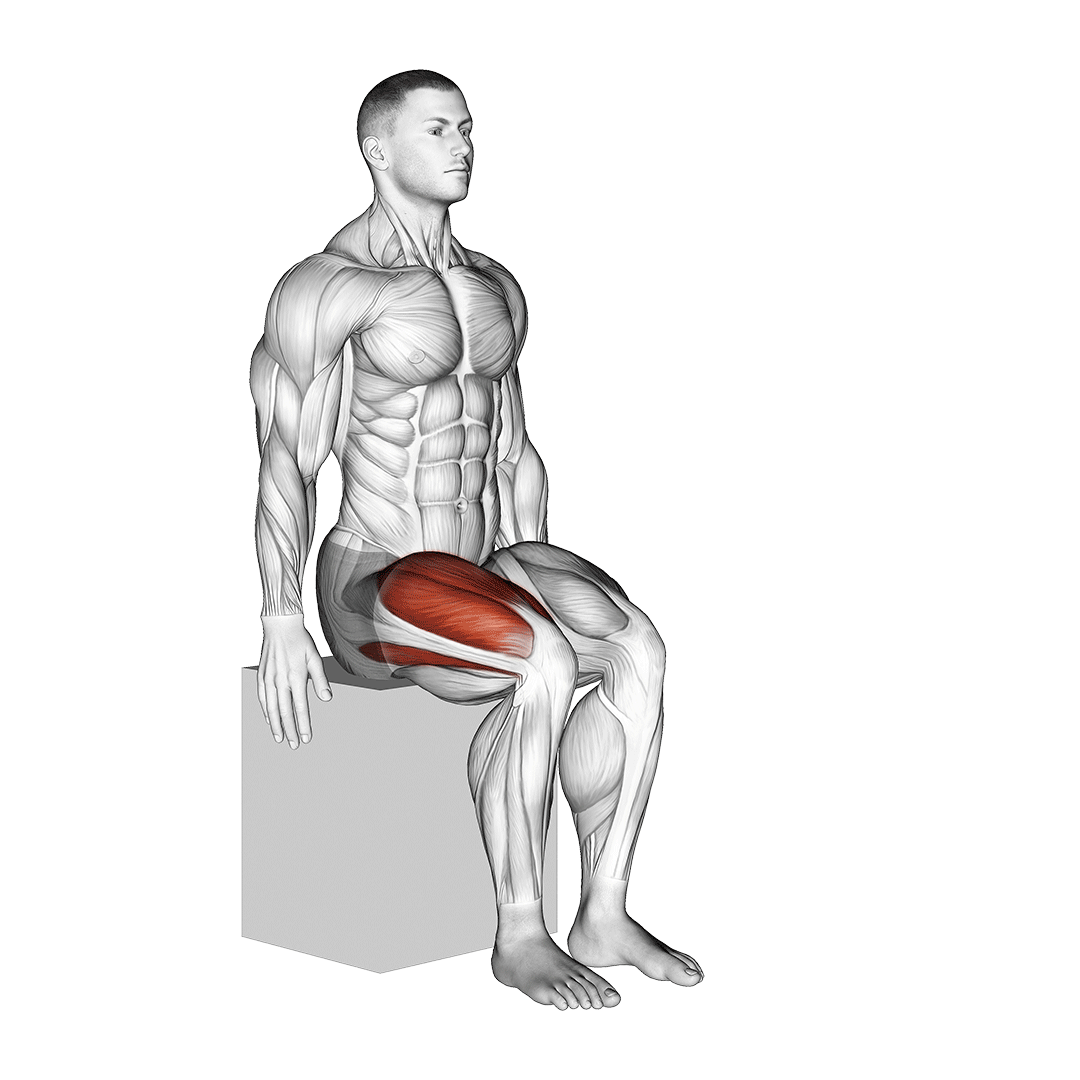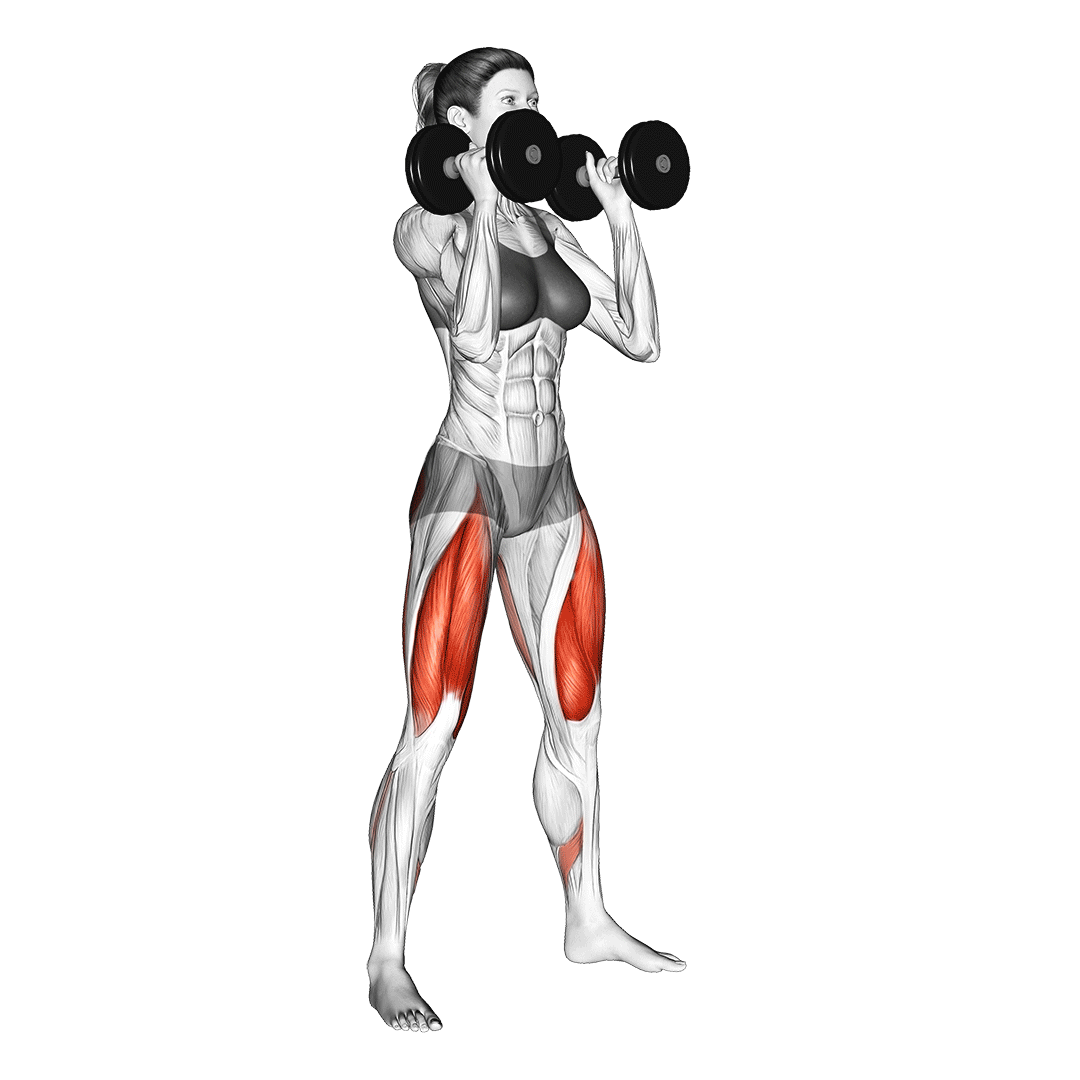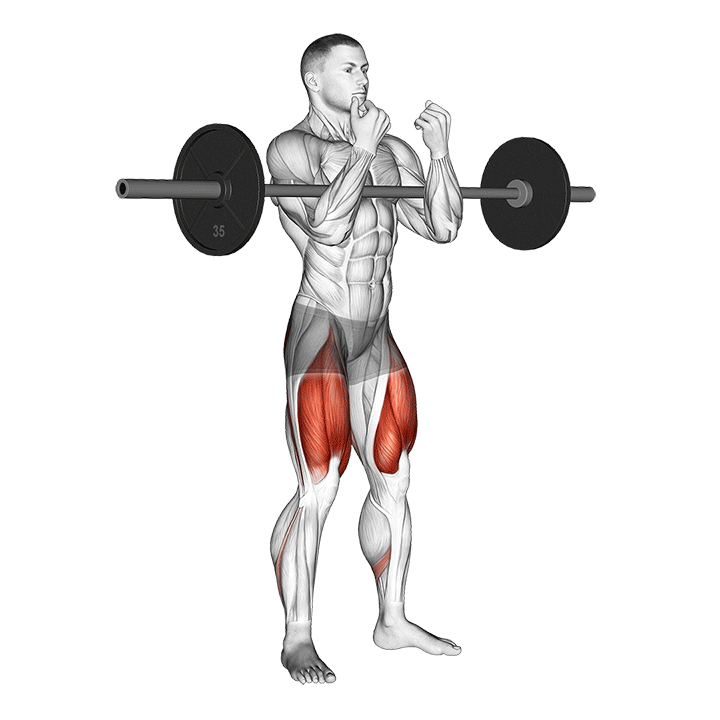What are the Benefits of Doing Goblet Squats?
Goblet squats are considered to be a novice level exercise owing to their self-limiting loading capacity and natural movement pattern.
Goblet squats are commonly performed for a wide variety of purposes and benefits, ranging from simple muscular development to task-specific athletic conditioning.
Namely:
- Excellent for Building Lower Body Mass and Baseline Strength
- Reinforces Hip and Knee Extension Alongside Spinal Neutrality
- Relatively Safer Than Other Squat Variations
- Carryover to Front Squats and Zercher Squats
- Can be Purposed for Circuit Training, Drills or for Conditioning
As is the case with other forms of squat, individuals with a history of lower back, knee or hip injuries may wish to avoid performing goblet squats without prior go-ahead from a medical professional.
Benefits of Goblet Squats
Excellent for Building Lower Body Mass and Baseline Strength
The goblet squat is much like other squat variations in that it is excellent for developing the major muscle groups of the lower body.

Due to its somewhat limited loading capacity, the goblet squat is somewhat better geared towards greater volume - thereby also making it excellent for inducing muscular hypertrophy as a result.
When done with correct technique, the goblet squat provides ample opportunity for building mass in the glutes, quads and hamstrings while also allowing for a baseline level of lower body strength to be developed in untrained individuals.
Of course, to maximize muscular development from any sort of resistance training, the lifter must ensure they are consuming a sufficient amount of protein, are in a caloric surplus and are partaking in a properly structured training program.
Reinforces Hip and Knee Extension Alongside Spinal Neutrality
Because goblet squats strengthen the quadriceps and gluteal muscles to a significant degree, lifters who regularly perform them will find that their requisite biomechanical actions are also reinforced as well.

Apart from strengthening the muscles responsible for said actions, goblet squats will also improve the flexibility and density of the connective tissues that compose these joints - leading to not only stronger biomechanics, but also smoother and more stable action as a whole.
Relatively Safer Than Other Squat Variations
Goblet squats share many of the same safety advantages as other anterior loaded squats - those being greatly reduced lower back injury risk and a better distribution of pressure away from the spinal column.

What’s more - goblet squats are inherently self-limiting in that lifters will be limited solely to an amount of weight they are capable of holding up to chest height. In most cases, this is far less weight than would be injurious to their back or legs.
However, as an added benefit, many of the same injury risks associated with similar anterior loaded variations like the front squat are not present in the goblet squat. This makes the goblet squat excellent as an introduction to weighted squats, as a larger margin of error is present as far as proper technique is concerned.
Carryover to Front Squats and Zercher Squats
Although not necessarily identical to front squats or Zercher squats, the goblet squat targets much the same muscles in a similar enough stance to create a direct carryover effect.

Whether as an accessory movement or simply as a progression, regularly performing goblin squats will also lead to an increase in strength when performing other anterior loaded squats.
Even outside of a strictly muscular perspective, the goblet squat is excellent for reinforcing the trunk positioning and technique needed to execute these similar squat variants.
Can be Purposed for Circuit Training, Drills or for Conditioning
The goblet squat’s simplicity and relative safety make it excellent as more than just a conventional weightlifting program exercise.
Athletic training drills, CrossFit WoDs and exercise circuits all provide the perfect opportunity for inclusion of the goblet squat, where they can function as a form of aerobic exercise, task-specific practice or even as a method of building power and explosiveness.
References
1. Collins KS, Klawitter LA, Waldera RW, Mahoney SJ, Christensen BK. Differences in Muscle Activity and Kinetics Between the Goblet Squat and Landmine Squat in Men and Women. J Strength Cond Res. 2021 Oct 1;35(10):2661-2668. doi: 10.1519/JSC.0000000000004094. PMID: 34341315.
2. Lynn SK, Noffal GJ. Lower extremity biomechanics during a regular and counterbalanced squat. J Strength Cond Res 26: 2417–2425, 2012.
3. Slater, Lindsay V.; Hart, Joseph M.. Muscle Activation Patterns During Different Squat Techniques. Journal of Strength and Conditioning Research 31(3):p 667-676, March 2017. | DOI: 10.1519/JSC.0000000000001323
